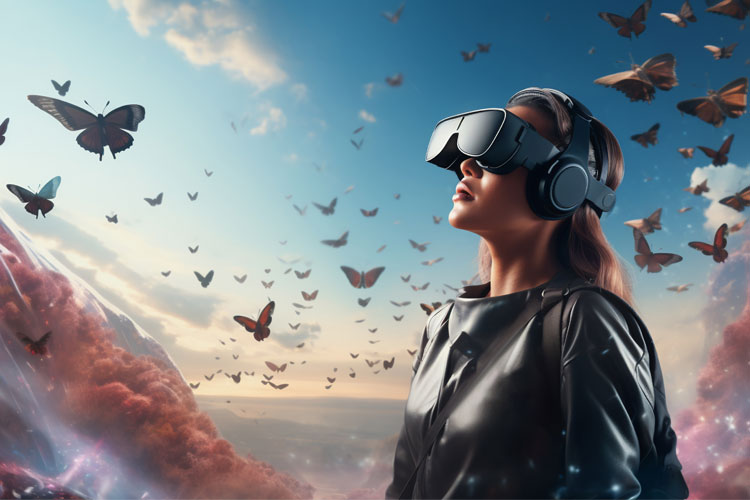Virtual Reality vs Augmented Reality: A Comparison
Introduction
Virtual Reality (VR) and Augmented Reality (AR) are two groundbreaking technologies that have the potential to transform how we interact with the digital and physical worlds. In this blog post, we’ll explore the differences between VR and AR and how they are changing the way we experience reality.Virtual Reality (VR)
Definition
Virtual Reality (VR) is a technology that immerses users in a computer-generated environment that can simulate physical presence in a real or imagined world. VR typically involves wearing a headset that covers the user’s eyes and often includes motion tracking sensors to provide a sense of presence and immersion.Key Characteristics
- Immersive Experience: VR aims to create a fully immersive experience by replacing the real world with a virtual one.
- Isolation: Users of VR are typically isolated from the physical environment, as the headset blocks out the real world entirely.
- Interactivity: VR environments often allow users to interact with objects and surroundings in the virtual world using specialized controllers or hand-tracking technology.
- Applications: VR is used in gaming, training simulations, medical applications, and virtual tourism, among others.
Augmented Reality (AR)
Definition
Augmented Reality (AR) is a technology that overlays digital information, such as images, videos, or 3D models, onto the real-world environment. Unlike VR, AR does not replace the real world; instead, it enhances it by adding digital elements to the user’s view, typically through a smartphone or AR glasses.Key Characteristics
- Enhanced Reality: AR enhances the user’s perception of the real world by adding digital information and interactions.
- Integration: AR seamlessly blends digital and physical elements, allowing users to see both simultaneously.
- Interactivity: AR applications often enable users to interact with virtual objects in the real world, such as catching Pokémon in Pokémon GO.
- Applications: AR is used in gaming, navigation, advertising, education, and industrial applications like maintenance and remote assistance.
Comparison: VR vs AR
- Immersion
- VR: VR offers a high level of immersion by completely replacing the real world with a virtual one. Users feel transported to a different environment.
- AR: AR enhances the real world but does not provide the same level of immersion as VR. Users remain aware of their physical surroundings.
- Interaction
- VR: VR environments often allow for complex interactions with virtual objects using specialized controllers or hand-tracking technology.
- AR: AR enables users to interact with both physical and virtual objects, making it more suitable for applications that require real-world engagement.
- Use Cases
- VR: VR is well-suited for applications where complete immersion is desired, such as gaming, virtual tours, and training simulations.
- AR: AR is suitable for applications that require a combination of digital and physical elements, such as navigation, education, and remote assistance.
- Hardware
- VR: VR typically requires dedicated hardware, such as a VR headset, to create the immersive experience.
- AR: AR can be experienced using smartphones, tablets, or AR glasses, making it more accessible to a wider audience.
- Examples
- VR: Examples of VR include Oculus Rift, HTC Vive, and PlayStation VR for gaming, as well as medical simulations and virtual tours.
- AR: Examples of AR include Pokémon GO and Snapchat filters for entertainment, as well as navigation apps like Google Maps.
- Future Potential
- VR: VR is evolving with advancements like wireless headsets and improved graphics, making it more comfortable and accessible.
- AR: AR has significant potential for various industries, including healthcare, education, and remote work, as AR glasses become more prevalent.






